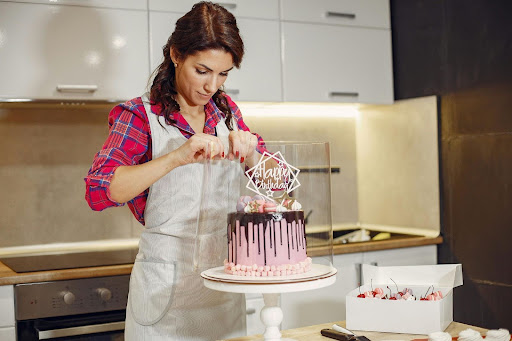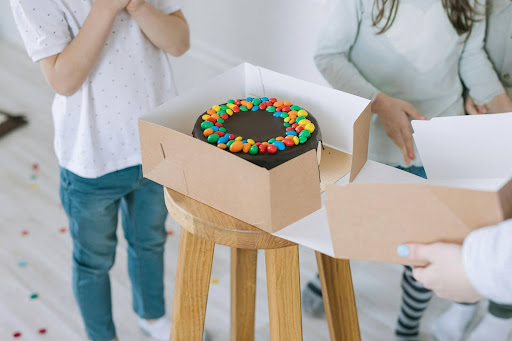Essential Tips for Transporting a Cake Without Damage, Transport Cake by Car and Airplane

Transporting a cake, whether it's a delicately frosted birthday cake or an ornate wedding cake, from one location to another can be a nerve-wracking experience. The fear of arriving with a smudged masterpiece or, worse, a cake disaster, is real. But fear not! This article is your ultimate guide to moving your cake safely by car or airplane, packed with essential tips and tricks that will ensure your cake arrives in perfect condition. Whether you're a seasoned baker or a first-time cake transporter, you'll find valuable insights and solutions to common transport challenges here. Let's dive into the world of cake transport and turn those moments of anxiety into confidence.
Article Outline
Understanding the Basics of Cake Transport
- Importance of Cake Stability
- Choosing the Right Tools for the Job
Selecting the Perfect Cake Carrier
- Benefits of Using a Cake Carrier
- How to Choose the Right Carrier
Preparing Your Cake for Transport
- The Role of Cake Boards and Boxes
- Tips for Frosting and Icing
Securing the Cake in a Car
- Finding the Right Spot in the Car
- Preventing the Cake from Sliding Around
The Challenges of Transporting a Tiered Cake
- Strategies for Multi-Level Cakes
- Keeping Tiered Cakes Stable
Using a Cake Box: Pros and Cons
- When to Use a Cake Box
- How to Secure Your Cake Inside a Box
Transporting a Cake Without a Carrier
- Alternative Methods
- Ensuring Cake Safety Without Traditional Tools
Cake Transport by Airplane: Tips and Considerations
- Understanding Airline Policies
- Packing Your Cake for Air Travel
After Arrival: Final Touches and Presentation
- Inspecting and Repairing Minor Damages
- Presenting Your Cake Post-Transport
Frequently Asked Questions About Cake Transport
- Addressing Common Concerns
- Expert Tips for Unusual Situations
Understanding the Basics: Transport a Cake
Transporting a cake successfully starts with understanding the basics: stability and the right tools. The foundation of your cake, often a sturdy cake board, is crucial. A cake board that's slightly larger than the base of your cake provides stability and makes handling easier. Equally important is the selection of a suitable transport container. Whether it's a carrier designed specifically for cakes or a makeshift solution, ensuring the cake doesn’t move is key.
Use a Cake Carrier to Transport Cakes by Car
A cake carrier is an invaluable tool for anyone looking to transport cakes regularly. These carriers are designed to protect your cake from dust, moisture, and the bumps along the road. When choosing a carrier, consider the size of your cakes and whether you need a carrier with adjustable tiers for taller creations. The best carriers are those that snugly fit your cake, preventing any movement.
Preparing Your Cake for Transport, Freeze the Actual Cake and Icing
Before the cake even sees the inside of a car or plane, proper preparation is essential. Using a cake board and box that fits your cake's size ensures stability and protection. When it comes to frosting and icing, chilling your cake beforehand can make the surface less prone to damage. Frosting should be set and firm to the touch, which makes the cake less likely to smudge during transport. Keep the cake cool in the car and simply place the cake on a flat surface.
Securing the Cake in a Car, Tips for Transporting a Cake
The key to transporting a cake by car lies in finding a level surface and preventing any movement. The best place is usually the floor of the car, where the cake can sit flat. Non-slip mats under the cake carrier or box can prevent sliding. Always drive carefully, avoiding sudden stops or sharp turns that could disrupt the cake’s stability.
The Challenges of Transporting a Tiered Cake, like a Wedding Cake
Tiered cakes present their own set of challenges, primarily due to their height and structure. Using dowels in the construction of the cake can help secure the tiers together. Additionally, consider transporting the tiers separately and assembling the cake at your destination if the journey is particularly long or bumpy because it could cause you cake to slide.
Using a Cake Box: Pros and Cons

Cake boxes are a popular choice for transport due to their convenience and protection. While they offer excellent coverage against external elements, securing the cake inside the box is crucial to prevent any movement. Padding around the cake with cushioning materials can add an extra layer of security.
Transporting a Cake Without a Carrier
Not everyone has access to a cake carrier, but that doesn't mean you can't transport a cake safely. Creative solutions include using non-slip mats beneath a sturdy cake board inside a larger box. Ensure the cake is well chilled to reduce the risk of frosting damage, and fill any gaps in the box with soft materials to immobilize the cake.
Cake Transport by Airplane: Tips for Transporting
Transporting a cake by airplane requires understanding airline policies and careful packing. Contact the airline ahead of time to discuss your options. A sturdy, sealed container and possibly a cooler bag can help maintain the cake's temperature and integrity during the flight.
After Arrival: Final Touches and Presentation
Once you arrive, inspect your cake for any minor damages that might need fixing. Having a small repair kit with extra frosting or decorations can help you touch up the cake and ensure it looks its best for presentation.
Frequently Asked Questions About Cake Transport
This section addresses common concerns and provides expert tips for specific scenarios, like extreme temperatures or long-distance travel, ensuring your cake arrives in perfect condition, no matter the circumstances.
Key Takeaways
- Stability Is Key: Always use a cake board and consider a cake carrier for added security.
- Preparation Matters: Properly chill and secure your cake before transport.
- Secure Placement: In a car, ensure the cake is on a flat surface and doesn’t slide.
- Tiered Cake Strategy: Consider transporting tiers separately and assembling on-site.
- Air Travel Preparation: Check airline policies and pack your cake with care.
- Have a Repair Kit: Be ready to make minor touch-ups after transport.
Transporting a cake doesn’t have to be a stressful experience. With the right preparation and tools, you can ensure your beautiful creation arrives safely, ready to wow your audience.
